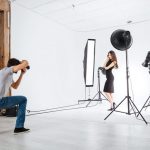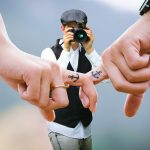Individuals are effectively the main subject for photographs. From party snaps, to photos of kids and travel shots of relatives before well known landmarks, tons of individuals photographs are taken each and every state of the year.
Picture photography is somewhat extraordinary to general individuals photography. The aim of picture photography is catch and show something of the ‘quintessence’ of an individual; to say something regarding their character, character, or life.
The three most significant things to get directly in representation photography are camera settings, lighting, and your relationship with your model.
Camera settings for representation photography
Since taking representation photographs is about an individual’s face (or if it’s a more extensive shot, their head-and-shoulders), great picture photography settings look to expel anything diverting from the foundation of the shot. This copies the impact of seeing somebody’s face from close up, and makes the subject ‘pop’ (this is photographer-represent ‘stick out and catch consideration’).
The best approach to accomplish an interruption free picture photo is to utilize a wide opening, frequently as wide as could be expected under the circumstances (f/2.8 or f/4 are well known decisions). Wide gaps produce a shallow profundity of-field, which renders anything a long way from the plane of best center – for example the foundation – as a delicate haze.
Beside a wide gap, the main other significant setting is ISO. This ought to be as low a number as could be expected under the circumstances (for example ISO 100), as higher ISOs will prompt advanced clamor, which is especially monstrous in a representation.
There’s one branch of picture photography where the suggested settings are extraordinary, and that is ecological representation photography. Ecological representation photography tries to show an individual in their ‘common natural surroundings’, which is frequently their working environment. Here you need to show the foundation, so a littler opening is fitting.
Lighting for picture photography
Lighting in representation photography can be as entangled as you can imagine. Proficient representation photography is quite often done in a studio, where the lighting can be 100% controlled. In case you’re understanding this, odds are you don’t have your own photography studio, so how about we examine a basic lighting plan you can set up at home.
To start with, position your model at a window. The light originating from the window ought to be splendid, yet not immediate (for example not coming legitimately from the sun). You model ought to confront you, side on to the window. Light from the window light will clearly illuminate the side of their face that is nearest to it. At that point, position something on the opposite side of your model that will ricochet reflected light from the window onto the opposite side of their face. Anything white or intelligent will do, for instance a bit of white cardboard or a sheet of aluminum.
Presently you have a fundamental, complimenting light plan, with the primary light source on one side of your model’s face, and ‘fill’ light from the reflector on the other. Remember that you should outline the shot close enough that the reflector isn’t in the shot.
Communicating with your subject
Representation photography unavoidably says something regarding the connection among photographer and subject. Except if you’re shooting proficient models, the hardest thing about taking representation photos isn’t in truth camera settings or lighting, yet guaranteeing that your model is agreeable and loosened up enough to give you great outcomes. A model who feels abnormal, awkward or unsure won’t photograph well.
Frequently the best technique to loosen up your model is just to draw in them in discussion, as this will take their brain off the camera. They’ll most likely get progressively OK with the procedure after you’ve run through a couple of shots, so plan a conventional measure of time and plan on making your best efforts towards the finish of the meeting.


